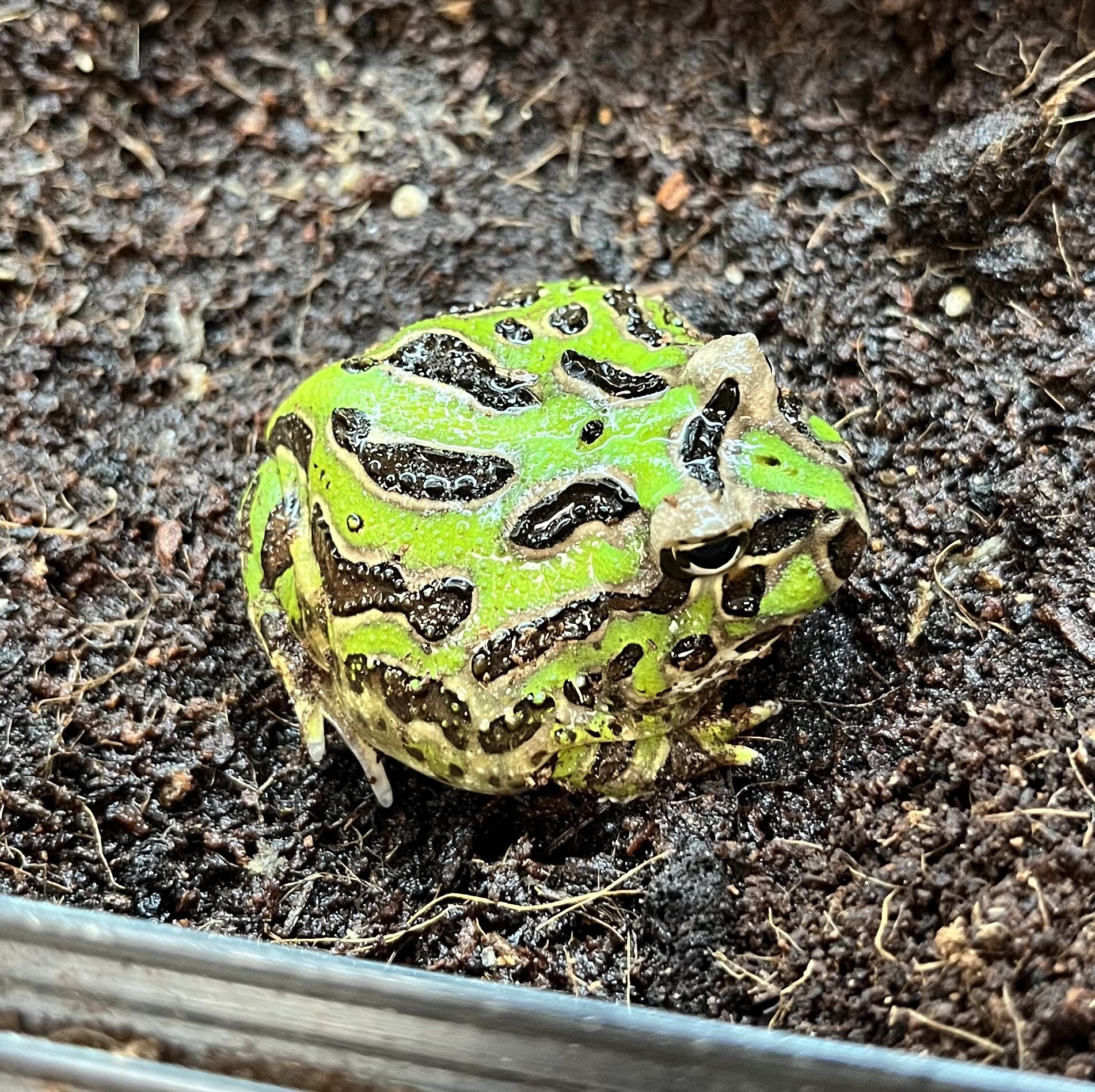
Pacman Frog
Care
Lifespan
10 - 20 years on average.
Adult size
4 - 8 inches for females, 2 - 4 inches for males, can reach full size within 16 months.
Housing
We recommend a glass front opening tank with appropriate ventilation such as an Exo Terra Terrarium. Babies and juveniles can be housed in smaller enclosures such as faunariums to help establish a healthy appetite.
We recommend housing older juveniles and adults in an enclosure measuring a recommended minimum of 60x45x45cm for females and 45x45x45cm for males.
We recommend filling the enclosure with branches, foliage and decorations that will promote naturalistic burrowing behaviours, as well as providing the frog with plenty of places to hide and feel secure. It is possible to house baby Pacman Frogs in their adult sized enclosure as long as food is easy for them to find.
A bioactive setup is also an option, involving live plants and a ‘clean-up crew’ within the soil. For more information about bioactivity, please talk to a member of staff or message one of our Facebook Pages.
Heating
A heat mat can be used on the side of the glass enclosure attached to a Mat stat set at the correct temperature. Alternatively, for a more accurate hotspot, a Deep Heat Projector can be used within a Heat Dome placed on the top mesh of the enclosure. We recommend that a dimming thermostat is used to prevent overheating.
Recommended temperatures within the enclosure are: A hotspot of 26c (no hotter than 28c), and an ambient temperature of 20-24c. Temperatures can drop to 18c at night. We recommend that temperatures are measured using a reliable thermometer.
Lighting
UVB lighting is a beneficial option for this species. Benefits include aiding in the shedding cycle and aiding in the synthesis of calcium, therefore preventing Metabolic Bone Disease.
If you choose to provide UVB lighting, an Arcadia Shade Dweller UVB Kit placed on the top mesh of the enclosure is what we recommend. We recommend that lighting is put on a 12 hour light cycle (for example 8am-8pm) to replicate day and night.
Humidity
Pacman Frogs require moderate to high humidity levels of 60-80% within the enclosure. This can be achieved by using a humidity retaining soil- based substrate and by spraying the enclosure daily. Conditions should never be kept constantly wet and the substrate should not become waterlogged or soggy. Allow humidity to drop back down to 60% between misting.
Water
We recommend that fresh water is provided daily and cleaned when dirty.
Diet
Pacman Frogs are insectivores so they only eat insects, offering live foods every 2- 3 days. We also recommend mice offered once a week to every 2 weeks to help with protein loads. Live food can be offered by tongs, Pacman Frogs are generally very food aggressive, even attempting fingers!
Supplementation
We recommend that a calcium supplement is used on food offered during weekdays (Monday- Friday) and a multivitamin used once a week on either a Saturday or Sunday (leaving a day of the weekend with no supplements used).
To supplement live food it is most recommended to add the amount of bugs being fed to a small plastic sandwich bag along with a small amount of the supplement, and then to gently shake the bag to lightly coat each insect before feeding. D3 supplements should be used if no UV lighting is provided to avoid metabolic bone disease however caution should be taken when using supplements with D3 as overdosing can cause neurological issues, thus we recommend just using UVB lighting.
Handling
As with most frog species, we recommend that handling should be kept to a minimum and only done when required such as cleaning and maintenance of the enclosure. When handling, we recommend the use of dust free gloves to prevent oils on our skin causing harm to the frog.
